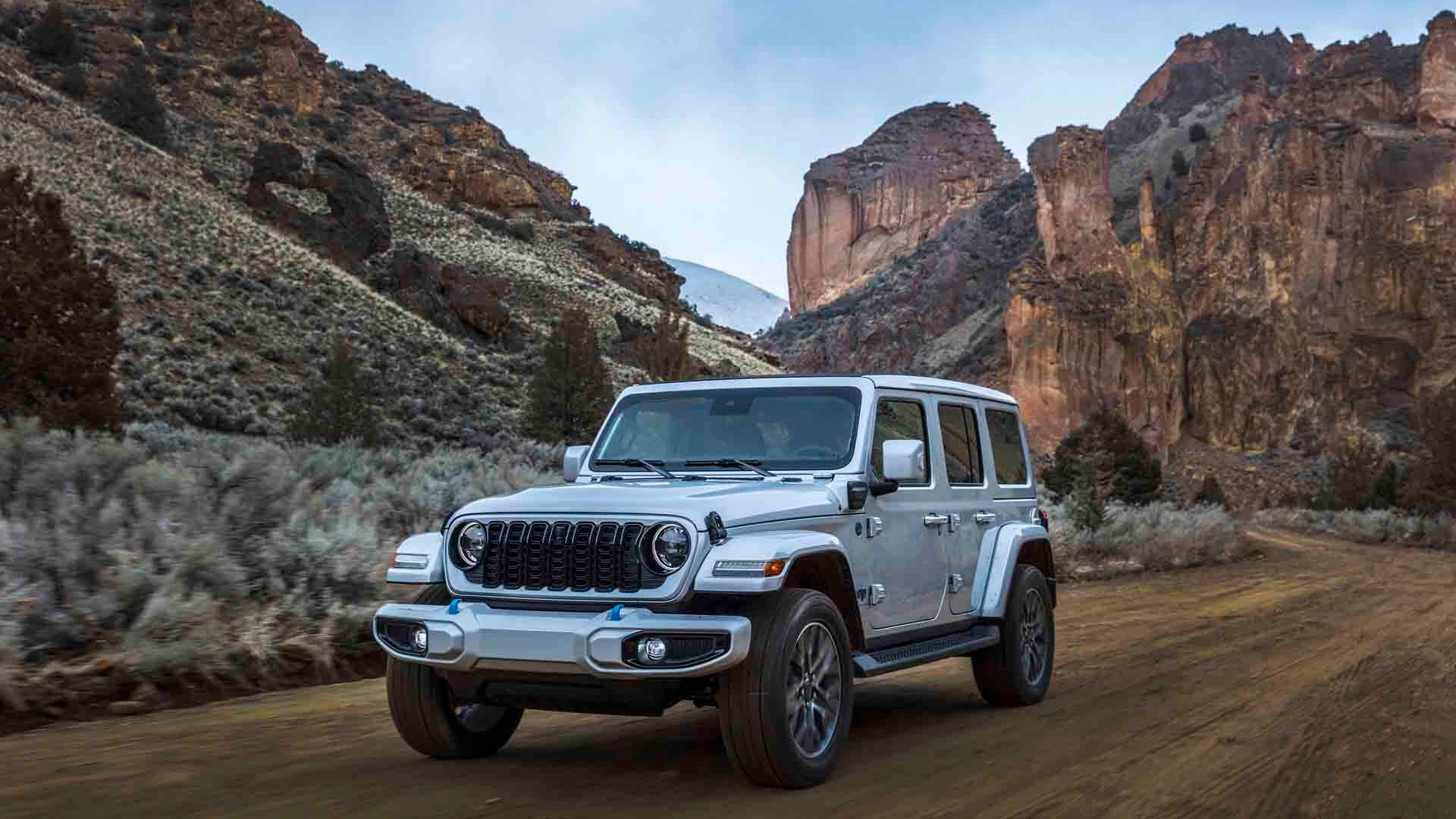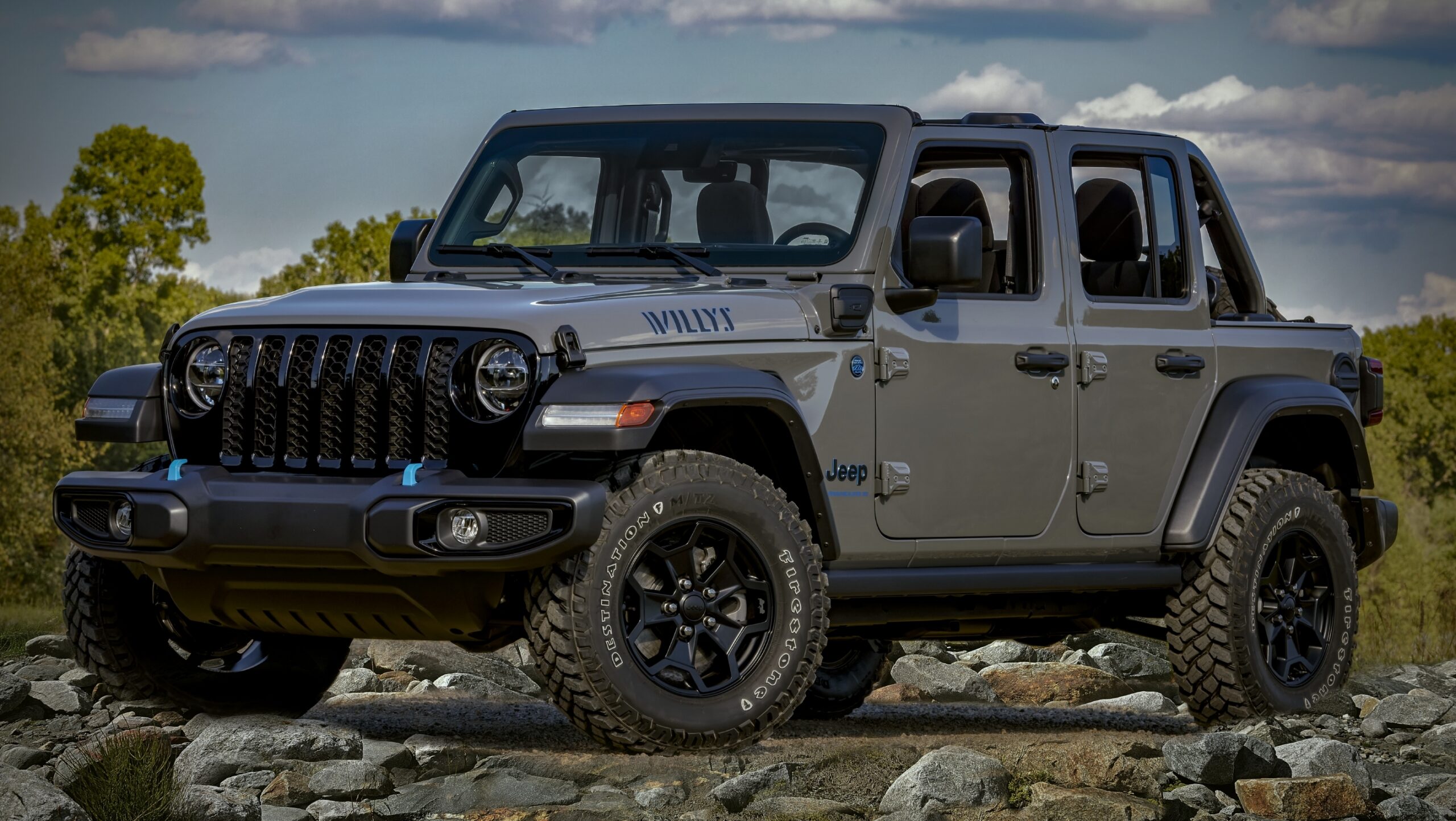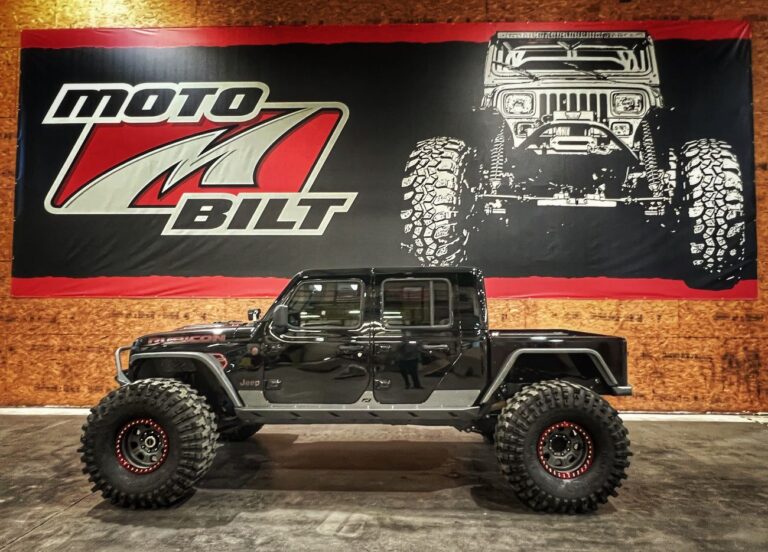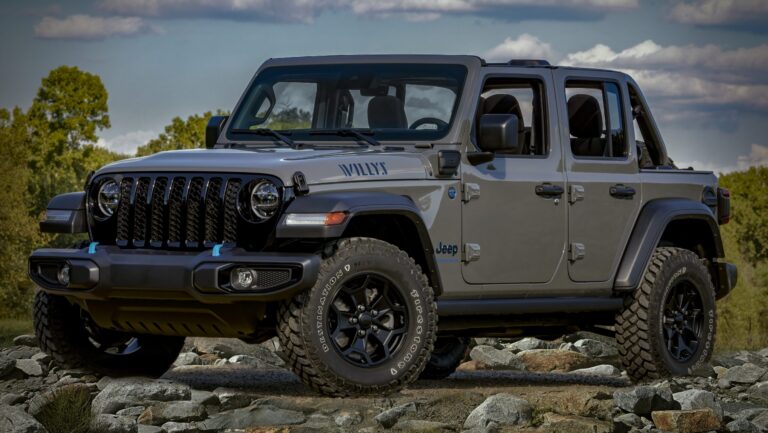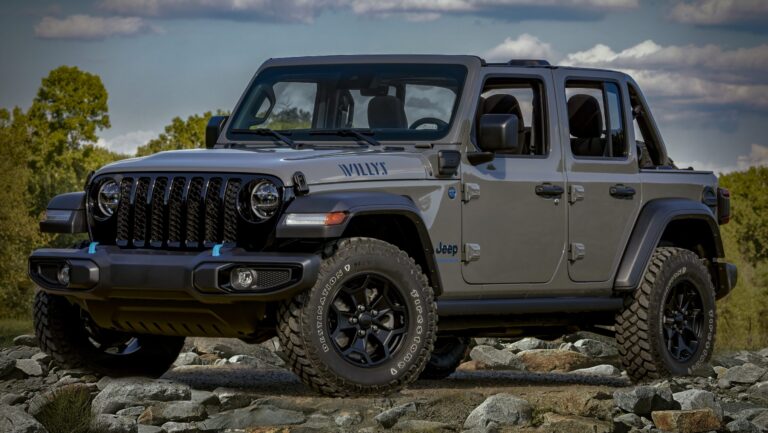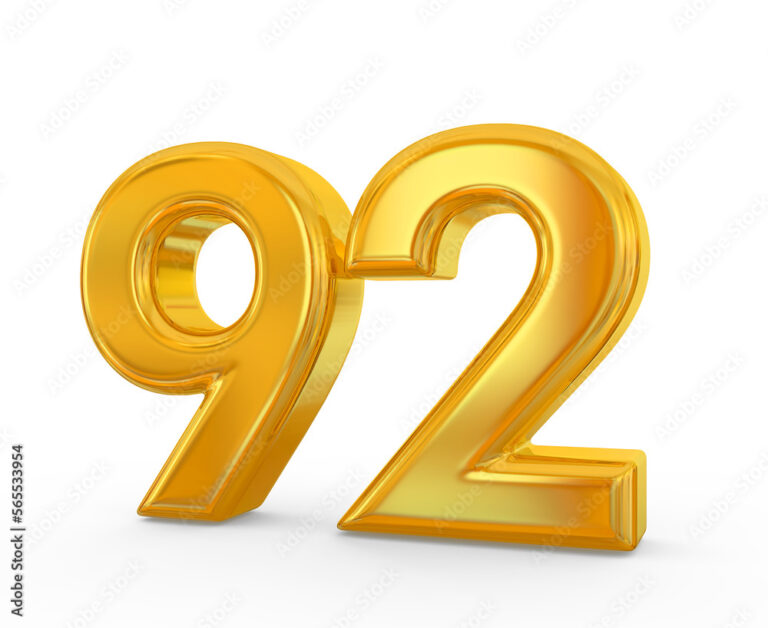Jeep Wrangler 07: The Dawn of a New Era
Jeep Wrangler 07: The Dawn of a New Era jeeps.truckstrend.com
The year 2007 marked a pivotal moment in the storied history of the Jeep Wrangler. It was the birth year of the JK generation, a complete redesign that brought the iconic off-roader into the 21st century while retaining its rugged essence. The "Jeep Wrangler 07," as it’s often referred to, wasn’t just another model year; it represented a significant leap forward in terms of size, comfort, and the revolutionary introduction of a four-door variant, the Wrangler Unlimited. This expansion of the lineup opened the Wrangler to an entirely new demographic, blending its legendary go-anywhere capability with practical everyday usability.
For enthusiasts, the 2007 Wrangler is a fascinating blend of tradition and innovation. It retained the removable doors, fold-down windshield, and open-air freedom that define the Wrangler experience, but it wrapped these features in a larger, more modern package. Understanding the nuances of the 2007 model is crucial for anyone considering ownership, as it comes with its own unique set of characteristics, advantages, and potential challenges. This comprehensive guide will delve deep into everything you need to know about the Jeep Wrangler 07, from its specifications and trim levels to common issues, modification potential, and what to look for when buying one today.
Jeep Wrangler 07: The Dawn of a New Era
The JK Revolution: An Overview of the 2007 Wrangler
The 2007 Jeep Wrangler, designated as the JK chassis code, was a radical departure from its TJ predecessor. While the TJ was a compact, highly capable off-roader, the JK grew significantly in every dimension. It boasted a wider track, longer wheelbase, and a more spacious interior, addressing common complaints about the TJ’s cramped quarters.
The most groundbreaking change, however, was the introduction of the Wrangler Unlimited (JKU). For the first time, a factory-produced four-door Wrangler was available, offering increased passenger capacity and cargo space. This move was a stroke of genius, broadening the Wrangler’s appeal from a niche off-road toy to a more versatile family vehicle, without compromising its core off-road prowess.
Despite its larger size, the 2007 Wrangler maintained its signature rugged aesthetics and commitment to off-road capability. It retained the body-on-frame construction, solid axles, and robust 4×4 systems that have made the Wrangler a legend. It was designed from the ground up to be highly customizable, with an aftermarket industry ready to supply every conceivable modification.
Core Specifications and Features
The heart of the 2007 Jeep Wrangler was its new powertrain and updated mechanicals.
![]()
- Engine: The 2007 Wrangler introduced the 3.8-liter EGH V6 engine. This overhead valve (OHV) engine produced 202 horsepower and 237 lb-ft of torque. While an improvement over the TJ’s 4.0L inline-six in terms of emissions and packaging, it was often criticized by enthusiasts for feeling underpowered, especially in the heavier Unlimited models or with larger tires.
- Transmissions:
- 6-speed Manual (NSG370): A robust manual transmission offering good control for off-roading.
- 4-speed Automatic (42RLE): An older design, this automatic was functional but contributed to the perception of the 3.8L engine being underpowered due to its wide gear ratios.

- 4WD Systems:
- Command-Trac: Standard on X and Sahara models, this part-time 4WD system featured a NV241 transfer case with a 2.72:1 low-range gear ratio. It’s excellent for off-road use but not intended for use on dry pavement.
- Rock-Trac: Exclusive to the Rubicon model, this advanced system utilized an NV241OR transfer case with an impressive 4:1 low-range gear ratio, providing superior crawling capability.
- Axles:
- Front: Dana 30 (X, Sahara), Dana 44 (Rubicon)
- Rear: Dana 44 (all trims)
- Rubicon models also came with electronic locking differentials (front and rear) and an electronic sway bar disconnect system, further enhancing their off-road prowess.
- Body Styles:
- 2-Door (JK): The traditional Wrangler, shorter wheelbase, more nimble off-road.
- 4-Door Unlimited (JKU): Longer wheelbase, significantly more interior space, improved on-road stability, and better towing capacity.
- Interior: The 2007 interior was a significant upgrade in terms of ergonomics and materials compared to the TJ. While still rugged and washable, it offered more creature comforts, including available power windows, cruise control, and an improved sound system.
- Exterior: The iconic seven-slot grille and round headlights remained, but the overall design was more muscular and modern. The removable hardtop (Freedom Top with removable panels) and soft top options continued the tradition of open-air driving.
Exploring the Trim Levels
The 2007 Jeep Wrangler was available in three primary trim levels, each catering to different preferences and budgets:
- Wrangler X (later renamed Sport):
- The base model, offering the essential Wrangler experience.
- Standard features included the 3.8L V6, 6-speed manual transmission, Command-Trac 4WD, Dana 30 front/Dana 44 rear axles, and 16-inch steel wheels.
- The interior was basic but functional, with manual windows and locks.
- The X model was (and still is) a popular choice for those who plan extensive modifications, as it provides a solid foundation without paying for features that will be replaced.
- Wrangler Sahara:
- Positioned as the comfort and style-oriented trim.
- Added features like body-colored fender flares, 18-inch aluminum wheels, premium cloth seating, power windows and door locks, air conditioning, and an upgraded sound system.
- The Sahara offered a more refined on-road experience for those who wanted a balance between daily driving and weekend adventures.
- Wrangler Rubicon:
- The undisputed king of off-road capability straight from the factory.
- Built for extreme trails, the Rubicon included:
- Heavy-duty Dana 44 front and rear axles.
- Electronic front and rear locking differentials (Tru-Lok).
- Electronic sway bar disconnect system, allowing for maximum wheel articulation.
- Rock-Trac 4WD system with a 4:1 low-range transfer case.
- 32-inch BFGoodrich Mud-Terrain tires on 17-inch wheels.
- Rock rails for underbody protection.
- The Rubicon package was designed for serious off-road enthusiasts who demand the best stock capability.
All trim levels were available in both the 2-door and 4-door Unlimited configurations, allowing buyers to choose the size that best fit their needs.
Driving Dynamics: On-Road and Off-Road
The 2007 Wrangler’s driving experience is a defining characteristic, blending traditional Jeep ruggedness with a touch more refinement.
- On-Road Performance:
- Compared to the TJ, the JK offered a more stable and comfortable ride, thanks to its longer wheelbase and wider track. The steering was still relatively vague, a common trait for solid-axle vehicles, but improved.
- Road noise, especially with the soft top or aggressive tires, remained significant.
- The 3.8L V6 engine often felt strained, particularly in the heavier Unlimited models or when climbing grades. Acceleration was leisurely, and passing maneuvers required planning. Fuel economy was also a common complaint.
- Despite these points, the JK was far more livable as a daily driver than any Wrangler before it.
- Off-Road Prowess:
- This is where the 2007 Wrangler truly shines. Its legendary capability was not diminished by its larger size; in many ways, it was enhanced.
- Excellent ground clearance, short overhangs (especially the 2-door), and robust 4WD systems allowed it to tackle challenging terrain with ease.
- The Rubicon model, with its advanced features, was (and still is) one of the most capable stock off-road vehicles on the market, able to conquer trails that would stop many other SUVs in their tracks.
- The ability to remove the doors and roof provided an unparalleled immersive off-road experience.
Common Issues, Recalls, and Maintenance Tips
While the 2007 Wrangler is a robust vehicle, like any first-year model of a new generation, it has its share of known quirks and common issues that prospective and current owners should be aware of.
- Totally Integrated Power Module (TIPM): This is perhaps the most notorious issue. The TIPM controls many electrical functions, and failure can lead to a host of problems, including non-working fuel pumps, power windows, wipers, and horn. Replacing it can be costly.
- 3.8L Engine Oil Consumption: Many 3.8L engines are known to consume oil. While often not a sign of a catastrophic failure, it requires diligent checking and topping off of engine oil between changes. Some owners have reported excessive consumption requiring engine rebuilds or replacements.
- "Death Wobble": This terrifying phenomenon involves violent, uncontrollable shaking of the front end, usually triggered by hitting a bump at highway speeds. It’s not unique to Wranglers but is common. It’s typically caused by worn steering or suspension components (e.g., track bar, tie rod ends, ball joints) or improperly installed lift kits.
- Rust: Like many vehicles of its age, the 2007 Wrangler can be prone to rust, especially in areas with harsh winters or coastal climates. Common rust spots include the frame (especially around welds and body mounts), suspension components, rocker panels, and sometimes the floorboards.
- Window/Door Leaks: Given the removable nature of the doors and roof, leaks around the seals are a common complaint. This can range from minor drips to significant puddles. Regular maintenance of seals and proper installation of tops/doors can mitigate this.
- Automatic Transmission (42RLE): Some owners report issues with this transmission, including delayed shifts, harsh shifts, or premature failure, particularly in vehicles that are heavily modified or frequently used for towing/off-roading.
- Maintenance Tips:
- Regular Fluid Checks: Beyond engine oil, regularly check and change differential, transfer case, and transmission fluids, especially if you off-road.
- Grease Zerk Fittings: Regularly grease all steering and suspension components with zerk fittings.
- Inspect for Rust: Periodically inspect the frame and undercarriage for rust and address it promptly.
- Tire Rotations and Balance: Crucial for even tire wear and preventing steering issues.
- Suspension Inspection: Keep an eye on bushings, ball joints, and tie rod ends, especially if you experience any steering anomalies.
The World of Modifications and Customization
One of the most compelling aspects of Jeep Wrangler ownership is the unparalleled potential for modification and customization. The 2007 JK is no exception, with a vast aftermarket industry dedicated to enhancing its capabilities and aesthetics.
- Lift Kits: Ranging from mild leveling kits to extreme long-arm suspension systems, lift kits are the most popular modification, allowing for larger tires and improved ground clearance. Choose a reputable brand and professional installation to avoid issues like "death wobble."
- Larger Tires: Crucial for off-road performance. Ensure your chosen tire size is compatible with your lift and gearing.
- Aftermarket Bumpers: Provide better approach angles, protection, and often integrate winch mounts.
- Winches: An essential recovery tool for off-road adventures.
- Lighting: LED light bars, spot lights, and rock lights improve visibility on and off the trail.
- Gearing: For those with larger tires, re-gearing the axles is often necessary to restore lost power and improve drivability.
- Axle Upgrades: For extreme off-roaders, upgrading to stronger axle shafts or even entirely new axle assemblies can prevent breakage.
- Interior Accessories: All-weather floor mats, cargo organizers, and upgraded sound systems enhance comfort and utility.
Practical Advice: Before diving into modifications, research thoroughly. Understand how each mod affects other components and the vehicle’s overall performance and safety. Prioritize functional upgrades that match your intended use. Always consider professional installation for critical components like suspension and steering.
Buying a Used 2007 Jeep Wrangler: What to Look For
Purchasing a used 2007 Wrangler requires diligence. Given their age and common use, many have been driven hard or modified.
- Pre-Purchase Inspection (PPI): This is paramount. Have a trusted mechanic (ideally one familiar with Jeeps) perform a thorough inspection.
- Rust Inspection: Pay close attention to the frame (especially the rear crossmember and body mount areas), rocker panels, and floorboards. Surface rust is common, but deep, structural rust is a red flag.
- Off-Road Abuse: Look for dents, scrapes, and bends on the underside (skid plates, differential covers, control arms, exhaust). Check for bent tie rods or drag links. This indicates hard use.
- Steering and Suspension: During a test drive, listen for clunks, pops, or excessive play. Pay attention to how it handles bumps; any sign of "death wobble" is a serious concern. Check for worn ball joints, tie rod ends, and track bar bushings.
- Engine & Transmission: Listen for unusual engine noises. Check the oil level and condition. For automatics, check fluid condition and listen for harsh or delayed shifts. For manuals, check clutch engagement.
- TIPM Issues: Test all electrical components: windows, wipers, horn, headlights, radio. Any intermittent issues could point to a failing TIPM.
- Modifications: Assess the quality of any aftermarket modifications. Were they installed professionally? Are they reputable brands? Poorly installed lifts or cheap parts can cause significant issues.
- Maintenance Records: Ask for service history. Regular maintenance is a good indicator of how well the vehicle was cared for.
- Leaks: Check for fluid leaks from the engine, transmission, transfer case, and differentials. Also, inspect the interior for signs of water leaks (damp carpets, mildew smell).
The Ownership Experience: Benefits and Challenges
Owning a 2007 Jeep Wrangler is a unique experience, offering distinct advantages and some notable drawbacks.
- Benefits:
- Unmatched Off-Road Capability: The core reason to own a Wrangler.
- Strong Community: A vibrant and supportive owner community.
- High Resale Value: Wranglers hold their value exceptionally well.
- Open-Air Freedom: Removable top and doors offer an unparalleled driving experience.
- Iconic Style: Instantly recognizable and timeless design.
- Customization Potential: Limitless options for personalization.
- Challenges:
- Fuel Economy: Poor by modern standards, especially with larger tires.
- On-Road Refinement: Can be noisy, with a truck-like ride and less precise steering.
- Reliability Concerns: Known issues like the TIPM and "death wobble" can be frustrating.
- Cost of Ownership: Fuel, maintenance, and potential repairs can add up. Modifications are an additional expense.
- Security: Removable tops and doors can make them easier targets for theft or break-ins.
Jeep Wrangler 07 Price Table (Estimated Used Prices – USD)
Note: Prices vary significantly based on vehicle condition, mileage, modifications, geographic location, and market demand. This table provides a general range for a well-maintained vehicle.
| Trim Level | Body Style | Condition (Fair) | Condition (Good) | Condition (Excellent) |
|---|---|---|---|---|
| Wrangler X | 2-Door | $5,000 – $8,000 | $8,000 – $11,000 | $11,000 – $14,000+ |
| Wrangler X | 4-Door | $6,000 – $9,000 | $9,000 – $12,000 | $12,000 – $15,000+ |
| Wrangler Sahara | 2-Door | $6,000 – $9,000 | $9,000 – $12,000 | $12,000 – $15,000+ |
| Wrangler Sahara | 4-Door | $7,000 – $10,000 | $10,000 – $13,000 | $13,000 – $16,000+ |
| Wrangler Rubicon | 2-Door | $8,000 – $12,000 | $12,000 – $16,000 | $16,000 – $20,000+ |
| Wrangler Rubicon | 4-Door | $9,000 – $14,000 | $14,000 – $18,000 | $18,000 – $22,000+ |
Factors that can increase price: Low mileage, hardtop, desirable factory options, tasteful and professional modifications (e.g., quality lift kit, tires, winch), excellent maintenance history, rust-free condition.
Factors that can decrease price: High mileage, significant rust, deferred maintenance, poorly installed modifications, signs of severe off-road abuse, existing known issues (e.g., TIPM failure, death wobble symptoms).
Frequently Asked Questions (FAQ) about the 2007 Jeep Wrangler
Q1: Is the 2007 Jeep Wrangler reliable?
A1: The 2007 Wrangler has a mixed reputation for reliability. While the core mechanicals are generally robust, it’s known for specific issues like the Totally Integrated Power Module (TIPM) and the 3.8L engine’s oil consumption. "Death Wobble" is also a common complaint. Regular maintenance and addressing issues promptly are key to reliability.
Q2: What is the fuel economy like for the 2007 Wrangler?
A2: Fuel economy is generally poor. The 3.8L V6 combined with the vehicle’s weight and aerodynamic brick-like shape typically results in around 15-18 MPG combined, depending on the transmission, tire size, and driving style. Heavily modified Wranglers with larger tires will see even lower figures.
Q3: Is the 3.8L engine powerful enough for the Wrangler?
A3: The 3.8L V6 engine (202 hp, 237 lb-ft) is generally considered adequate but not powerful, especially in the heavier 4-door Unlimited models or when equipped with larger tires. It gets the job done but lacks the spirited acceleration of later Wrangler engines. Its main issues are perceived lack of power and oil consumption.
Q4: What is "Death Wobble" and how can I fix it?
A4: "Death Wobble" is a violent, uncontrolled oscillation of the front wheels, typically occurring at highway speeds after hitting a bump. It’s usually caused by worn or loose steering and suspension components (e.g., track bar, tie rod ends, ball joints, control arm bushings). Fixing it involves diagnosing and replacing the worn components, often starting with the track bar. Proper alignment and tire balancing are also crucial.
Q5: Can I take the doors off the 2007 Wrangler? Is it legal?
A5: Yes, all Jeep Wranglers, including the 2007 model, are designed for the doors to be easily removed. The legality of driving without doors varies by state or country. Most jurisdictions require mirrors, so many owners install aftermarket side mirrors when the doors are off. Always check your local laws.
Q6: Is the 4-door Wrangler Unlimited (JKU) worth it over the 2-door (JK)?
A6: It depends on your needs. The 4-door Unlimited offers significantly more passenger and cargo space, making it much more practical as a daily driver or family vehicle. Its longer wheelbase also provides a more stable ride on the road and better climbing stability off-road. The 2-door is more nimble on tighter trails and generally lighter, making it a purer off-road experience for some. The 4-door typically commands a higher price.
Q7: What’s the difference between the Sahara and Rubicon trims?
A7: The Sahara is more comfort and appearance-focused, with body-colored fender flares, upgraded interior, and larger wheels for on-road appeal. The Rubicon is the dedicated off-road trim, featuring heavy-duty Dana 44 axles with electronic lockers, a lower-geared transfer case (4:1 Rock-Trac), electronic sway bar disconnect, and larger off-road tires from the factory.
Conclusion
The 2007 Jeep Wrangler, the inaugural model of the JK generation, holds a significant place in automotive history. It successfully expanded the Wrangler’s appeal without sacrificing its core identity as the ultimate off-road vehicle. While the 3.8L engine and some early-production quirks like the TIPM require attention, the 07 JK remains a highly capable and immensely customizable platform.
For those seeking the quintessential open-air, go-anywhere experience, coupled with surprising practicality (especially in the Unlimited variant), the 2007 Wrangler offers a compelling package. It embodies the spirit of adventure, inviting owners to become part of a passionate community and explore trails unknown. Understanding its unique characteristics, common issues, and vast modification potential is key to unlocking the full enjoyment of this iconic vehicle. Despite its quirks, the 2007 Jeep Wrangler continues to be a beloved and highly sought-after symbol of freedom and rugged capability.
